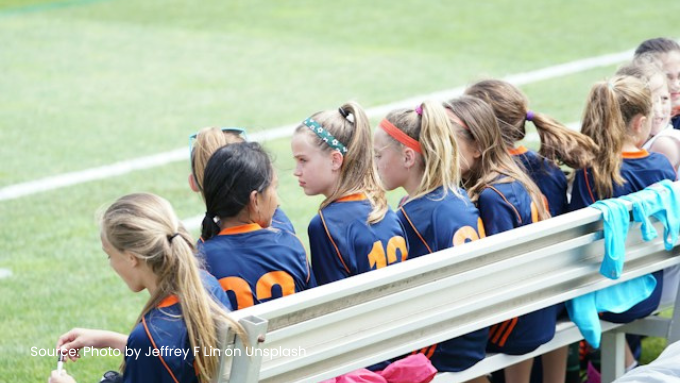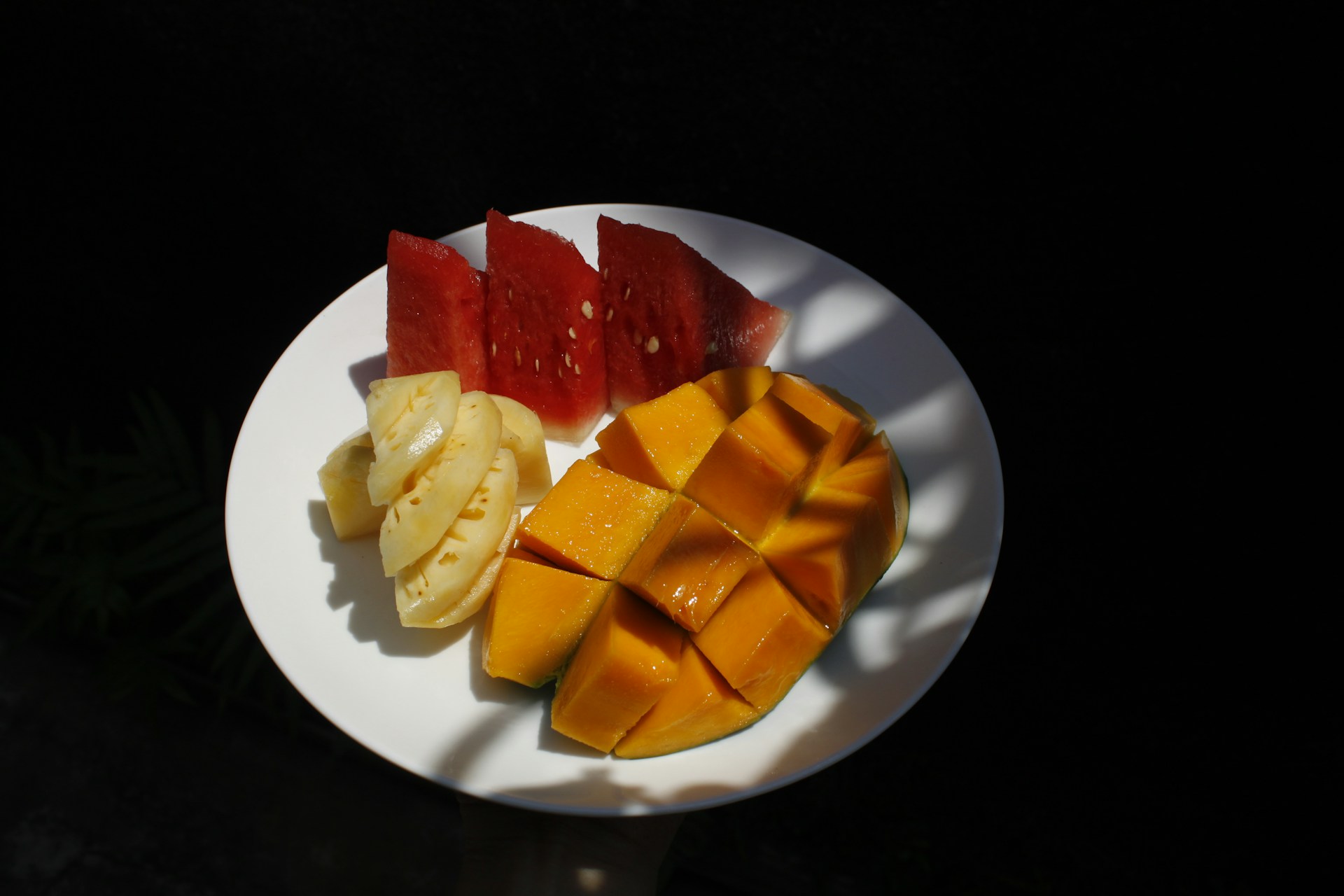The Relationship between Nutritional Status, Junk Food Consumption, and Exercise Habits of Adolescent Girls in Jakarta with the Incidence of Primary Dysmenorrhea
Hubungan antara Status Gizi, Konsumsi Junk Food, dan Kebiasaan Olahraga Remaja Perempuan di Jakarta dengan Kejadian Dismenorea Primer

Downloads
Background: Every one in six people in the world is an adolescent, and as many as 85% of adolescents live in developed countries, which often experience menstrual disorders such as primary dysmenorrhea. Primary dysmenorrhea is menstrual pain in the absence of pathological conditions in the pelvis that often occurs at a young/adolescent age triggered by various factors such as nutritional status, diet, exercise habits, and stress.
Objectives: To analyze the association between nutritional status (BMI-for-age), junk food consumption, and exercise habits of adolescent girls in Jakarta with the incidence of primary dysmenorrhea.
Methods: This study used a cross-sectional design, the population of this study was all grade 11 students in Jakarta (East Jakarta, South Jakarta, West Jakarta, Central Jakarta, North Jakarta). The method of obtaining samples used was purposive sampling. The instrument used was a questionnaire regarding nutritional status, exercise habits and junk food consumption patterns assessed using the Food Frequency Questionnaire (FFQ) through Google Forms.
Results: The results showed a significant relationship between nutritional status (p = 0.022), junk food consumption (p = 0.000), and exercise habits (p = 0.000) with the incidence of primary dysmenorrhea.
Conclusions: There was a correlation between nutritional status, junk food consumption, and exercise habits on the incidence of primary dysmenorrhea in adolescent girls in Jakarta. Further research is needed on the relationship between nutritional status, junk food consumption and exercise habits with the incidence of primary dysmenorrhea in other age groups, and with different methods to expand knowledge related to factors that cause primary dysmenorrhea.
Kusmiran, E. Kesehatan Reproduksi dan Wanita. Salemba Medika (Salemba Medika, 2014).
Prawirohardjo.S. Ilmu Kandungan Edisi Ketiga Cetakan Pertama. PT BINA PUSTAKA SARWONO PRAWIROHARDJO (2014).
Grandi, G. et al. Prevalence of menstrual pain in young women: What is dysmenorrhea? J. Pain Res. 2012:5, 169–174 (2012).
Larasati, T. & Alatas, F. Dismenore Primer dan Faktor Risiko Dismenore Primer pada Remaja. Majority 5, 79–84 (2016).
MD, A. D. Dysmenorrhea. https://emedicine.medscape.com/article/253812-overview (2021).
Juniar, D. Epidemiology of Dysmenorrhea among Female Adolescents in Central Jakarta. Makara J. Heal. Res. 19, (2015).
Silaen, R. Ani, L. Putri, W. Prevalensi Dysmenorrhea Dan Karakteristiknya Pada Remaja Putri Di Denpasar. J. Med. Udayana 8, 1–6 (2019).
Almatsier, S. Prinsip Dasar Ilmu Gizi. Gramedia Pustaka Utama (2009).
Marmi. Gizi dalam Kesehatan Reproduksi. (Pustaka Pelajar, 2013).
Gilly, A. Buku Ajar Kesehatan Reproduksi Wanita. EGC (2010).
Ju, H., Jones, M. & Mishra, G. D. A U-shaped relationship between body mass index and dysmenorrhea: A longitudinal study. PLoS One 10(7)), (2015).
Rony Wahyudi & Eka Bebasari & Elda Nzariati. Hubungan kebiasaan berolahraga dengan tingkat stres pada mahasiswa fakultas kedokteran universitas riau tahun pertama. JOM FK 2, 1–11 (2015).
Prasetyo, Y. KESADARAN MASYARAKAT BEROLAHRAGA UNTUK PENINGKATAN KESEHATAN DAN PEMBANGUNAN NASIONAL. MEDIKORA 11, (2015).
Andalasari, R. & Berbudi BL, A. KEBIASAAN OLAH RAGA BERPENGARUH TERHADAP TINGKAT STRESS MAHASISWA POLTEKKES KEMENKES JAKARTA III. J. Ilmu dan Teknol. Kesehat. 5, 179–191 (2018).
Temesvari, N. A., Adriani, L. & Qomarania, W. Z. Efek Olahraga terhadap Kejadian Dismenor Primer pada Siswi Kelas X SMA Negeri 78 Jakarta Barat. Media Kesehat. Masy. Indones. 15, 213 (2019).
Widyastuti, D. A. & Sodi, M. A. Pengaruh Kebiasaan Konsumsi Junk Food Terhadap Kejadian Obesitas Remaja. J. Agroteknologi 13, (2019).
Fleischhacker, S. E., Evenson, K. R., Rodriguez, D. A. & Ammerman, A. S. A systematic review of fast food access studies. Obesity Reviews vol. 12 (2011).
Lwin, M. O., Malik, S., Ridwan, H. & Sum Au, C. S. Media exposure and parental mediation on fast-food consumption among children in metropolitan and suburban Indonesian. Asia Pac. J. Clin. Nutr. 26, (2017).
Rinowati, N. A. Eksistensi televisi lokal (kasus: Eksistensi TVKU Dalam kompetisi industri penyiaran ). Univ. Diponegoro Semarang (2012).
Joo, S., Ju, S. & Chang, H. Comparison of fast food consumption and dietary guideline practices for children and adolescents by clustering of fast food outlets around schools in the Gyeonggi area of Korea. Asia Pac. J. Clin. Nutr. 24, (2015).
Indahwati, A. N., Muftiana, E. & Purwaningroom, D. L. Hubungan Mengonsumsi Makanan Cepat Saji (Fast Food) dengan Kejadian Dismenore Pada Remaja Putri di SMP N 1 Ponorogo. Indones. J. Heal. Sci. 1, 7–13 (2017).
Proverawati, A. & Misaroh, S. Menarche : Menstruasi Pertama Penuh Makna. (Yogyakarta Nuha Medika, 2009).
Ali Moustafa Elkhateeb, Y. Effects of Fast Foods in Relation to Free Radicals and Antioxidants. Am. J. Lab. Med. 2, 156–162 (2017).
Lameshow, S., Jr, D. W. H., Klar, J. & Lwanga, S. K. Besar Sampel dalam Penelitian Kesehatan. Herd vol. 4 (1997).
Lakkawar, N. J., Jayavani, R. L., Nivedhana Arthi, P., Alaganandam, P. & Vanajakshi, N. A Study of Menstrual Disorders in Medical Students and its Correlation with Biological Variables. Sch. J. Appl. Med. Sci. 2, 3165–3175 (2014).
Eichorn, L., Bruner, K., Short, T. & Abraham, S. P. Factors That Affect Exercise Habits of College Students. J. Educ. Dev. 2, 20–30 (2018).
Endozo, A. N. Current Exercise Habits and Factors Affecting Physical Activity Participation Among University Students. Glob. J. Health Sci. 11, 117 (2019).
Pramanik, P. & Dhar, A. Impact of Fast Foods on Menstrual Health of School Going Adolescent Girls in West Bengal, Eastern India. Glob. J. Biol. Agric. Heal. Sci. 3, (2014).
Manurung, G. E., Iskandar, A. & Rachmiputri, A. Hubungan Frekuensi Konsumsi dan Jenis Junk Food dengan Siklus Menstruasi pada Mahasiswi Fakultas Kedokteran Universitas Mulawarman. J. Sains dan Kesehat. 3, 392–394 (2021).
Majabadi, H. A. et al. Factors influencing fast-food consumption among adolescents in Tehran: A qualitative study. Iran. Red Crescent Med. J. (2016) doi:10.5812/ircmj.23890.
Anwar Hidayat. Teknik Sampling Dalam Penelitian (Penjelasan Lengkap). Statistikian https://www.statistikian.com/2017/06/teknik-sampling-dalam-penelitian.html (2017).
Raharjo, S. Cara Melakukan Uji Reliabilitas Alpha Cronbach's dengan SPSS. https://www.spssindonesia.com/2014/01/uji-reliabilitas-alpha-spss.html (2021).
Notoatmodjo. Metodologi Penelitian Kesehatan Cetakan Kedua. Rineka Cipta 16, (2012).
Astuti, G. A. K. R. W. HUBUNGAN KEBIASAAN OLAHRAGA, KEBIASAAN MENGONSUMSI FAST FOOD DENGAN KEJADIAN OBESITAS PADA REMAJA DI SMP BINTANG PERSADA DI DENPASAR. (Poltekkes Denpasar, 2018).
Nugroho, T. & Indra Utama, B. Masalah Kesehatan Reproduksi Wanita. Nuha Medika vol. 85 (Nuha Medika, 2014).
Rosalia, S., Puspitasari, L. A. & Anggari, R. S. KEJADIAN DISMENORE PADA SISWI: STUDI HUBUNGAN DENGAN KEBIASAAN OLAHRAGA RINGAN. J. Ilm. Kesehat. Rustida 09, 74–82 (2022).
Wulandari, A., Hasanah, O. & Woferest, R. Gambaran Kejadian Dan Manajemen Disminore Pada Remaja Putri Di Kecamatan Lima Puluh Kota PekanBaru. JOM FKp 5, (2018).
Herdiani, T. N., Manujung, V. H. & Mutiara, V. S. Study Literature Review Faktor-Faktor yang Berhubungan dengan Status Gizi Remaja Putri. Chmk Midwifery Sci. J. 4, 243–257 (2021).
Trimayasari, D. & Kuswandi, K. Hubungan Usia Menarche dan Status Gizi Siswi SMP Kelas 2 Dengan Kejadian Dismenore. J. Obs. Sci. 2, (2014).
Herdianti, K. A., Wardana, N. G. & Karmaya, I. N. M. Hubungan antara kebiasaan olahraga dengan dismenore primer pada mahasiswi pre-klinik Program Studi Pendidikan Dokter Fakultas Kedokteran Universitas Udayana tahun ajaran 2017. Bali Anat. J. 2, (2019).
Sagala, N. F. A., Ardiani, F. & Lubis, Z. Gambaran Kebiasaan Konsumsi Makanan Cepat Saji (Fast Food), Aktivitas Fisik Dan Status Gizi Pada Remaja Di Sma Negeri 1 Padangsidimpuan. Gizi, Kesehat. Reproduksi dan Epidemiol. 1, (2018).
Haryanti, R. S. HUBUNGAN FREKUENSI OLAHRAGA AEROBIK DENGAN KEJADIAN DISMENORE PADA REMAJA PUTRI. Profesi (Profesional Islam. Media Publ. Penelit. 14, 44 (2017).
Aulya, Y., Kundaryanti, R. & Rena, A. Hubungan Usia Menarche dan Konsumsi Makanan Cepat Saji dengan Kejadian Dismenore Primer Pada Siswi Di Jakarta Tahun 2021. J. Menara Med. 4, 10–21 (2021).
Apriyanti dkk., F. Hubungan Status Gizi Dan Usia Menarche Dengan Kejadian Dismenore Pada Remaja Putri Di SMAN 1 Bangkinang Kota Tahun 2018. J. Matern. Kebidanan 3, 49–58 (2018).
Lail, N. H. Hubungan Status Gizi, Usia Menarche dengan Dismenorea pada Remaja Putri Di SMK K Tahun 2017. J. Ilm. Kebidanan Indones. 9, 88–95 (2019).
Devillya, P. D. & Selty, T. Hubungan Antara Status Gizi Dan Siklus Menstruasi Pada Remaja Putri. J. Ilmu Kebidanan 3, 99–103 (2017).
Ariani, A. P. Ilmu Gizi. (Nuha Medika, 2017).
Horman, N., Manoppo, J. & Meo, L. N. FAKTOR-FAKTOR YANG BERHUBUNGAN DENGAN KEJADIAN DISMENORE PRIMER PADA REMAJA PUTERI DI KABUPATEN KEPULAUAN SANGIHE. J. KEPERAWATAN 9, 38 (2021).
Masluroh & Karlina Lin. Pendahuluan Metode Hasil Penelitian. J. Antara Kebidanan 1, 1–9 (2018).
Hermawahyuni, R., Handayani, S. & Alnur, R. D. Faktor Risiko Kejadian Dismenore Primer pada Siswi SMK PGRI 1 Jakarta Timur. J. Kesehat. KOMUNITAS 8, 97–101 (2022).
Nuzula, F. & Oktaviana, M. N. Faktor-Faktor yang Mempengaruhi Kejadian Dismenore Primer pada Mahasiswi Akademi Kesehatan Rustida Banyuwangi. J. Ilm. Kesehat. Rustida 6, 593–605 (2019).
Maimunah, S. K. S. & Yanti, E. E. Hubungan Olahraga dengan Kejadian Dismenore Mahasiswa Tingkat 1 Akper Pemkab Ngawi. e-Journal Cakra Med. 4, 26–31 (2017).
Deti, M. HUBUNGAN RUTIN OLAHRAGA DENGAN DISMENORE PRIMER PADA SISWI KELAS 1 SMAN 3 SAMARINDA. (Politeknik Kesehatan Kalimantan Timur, 2019).
Copyright (c) 2024 Amerta Nutrition

This work is licensed under a Creative Commons Attribution-ShareAlike 4.0 International License.
AMERTA NUTR by Unair is licensed under a Creative Commons Attribution-ShareAlike 4.0 International License.
1. The journal allows the author to hold the copyright of the article without restrictions.
2. The journal allows the author(s) to retain publishing rights without restrictions
3. The legal formal aspect of journal publication accessibility refers to Creative Commons Attribution Share-Alike (CC BY-SA).
4. The Creative Commons Attribution Share-Alike (CC BY-SA) license allows re-distribution and re-use of a licensed work on the conditions that the creator is appropriately credited and that any derivative work is made available under "the same, similar or a compatible license”. Other than the conditions mentioned above, the editorial board is not responsible for copyright violation.












































